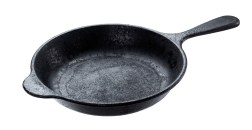A Step-by-Step Guide: Patching Drywall for Beginners

Patching drywall may seem like a daunting task for beginners, but with the right tools and techniques, it can be a simple and rewarding DIY project. Whether you have a small hole or a larger damaged area, learning how to patch drywall is an essential skill for any homeowner. In this step-by-step guide, we will walk you through the process of patching drywall, from preparing the area to applying the final coat of paint.
Preparing the Area
Before you start patching your drywall, it’s important to prepare the area properly. This involves gathering the necessary tools and materials and ensuring that the damaged area is clean and free from debris.
Begin by gathering your tools, which should include a putty knife, sandpaper (medium grit), joint compound, drywall tape, a utility knife or saw, and a sanding block. Additionally, make sure you have drop cloths or plastic sheets to protect your flooring or furniture.
Next, assess the damaged area and remove any loose or crumbling pieces of drywall using a utility knife or saw. Be careful not to remove too much material as this can weaken the structure. Once you’ve removed any loose debris, use sandpaper to smooth out any rough edges around the hole.
Applying Joint Compound
With the area prepared, it’s time to apply joint compound. This versatile material is used to fill in gaps and create a smooth surface on your repaired drywall.
Start by applying a thin layer of joint compound over the damaged area using a putty knife. Spread it evenly across the hole while feathering outwards to blend it with the surrounding wall. Allow this first layer to dry completely before proceeding.
Once dried, apply another thin layer of joint compound over the first one. This time, use a wider putty knife to spread it in a wider area, extending beyond the edges of the initial patch. Again, feather the compound outwards to create a smooth transition between the patch and the wall.
Applying Drywall Tape
After applying multiple layers of joint compound, it’s time to reinforce your patch with drywall tape. This step is crucial for preventing future cracks or damage to the repaired area.
Cut a piece of drywall tape slightly longer than the width of your patch. Position it over the joint compound, ensuring that it covers the entire length of the patch. Press it firmly into place using your putty knife or fingers.
Once you’ve applied the tape, cover it with another layer of joint compound. Use a wider putty knife this time to ensure complete coverage and feathering at the edges. Smooth out any excess compound and allow it to dry completely before moving on to the next step.
Sanding and Finishing
The final step in patching drywall is sanding and finishing. This will create a seamless finish that blends seamlessly with your existing wall.
Start by using medium-grit sandpaper or a sanding block to smooth out any ridges or bumps on your patched area. Be careful not to oversand as this can damage the surrounding wall.
Once you’re satisfied with the smoothness of your repaired area, wipe away any dust with a clean cloth or sponge. At this point, you can apply another thin layer of joint compound if necessary to fill in any imperfections or uneven areas.
After allowing all layers of joint compound to dry completely, give your patched area one final sanding using fine-grit sandpaper for a flawless finish. Once you’re happy with how it looks and feels, you can prime and paint over your repaired drywall to match its surroundings.
In conclusion, patching drywall may seem overwhelming at first, but by following these step-by-step instructions, even beginners can achieve professional-looking results. Remember to prepare the area properly, apply joint compound in multiple layers, reinforce with drywall tape, and finish off with sanding and painting. With practice, you’ll become more confident in your ability to tackle drywall repairs and maintain the beauty of your home.
This text was generated using a large language model, and select text has been reviewed and moderated for purposes such as readability.





